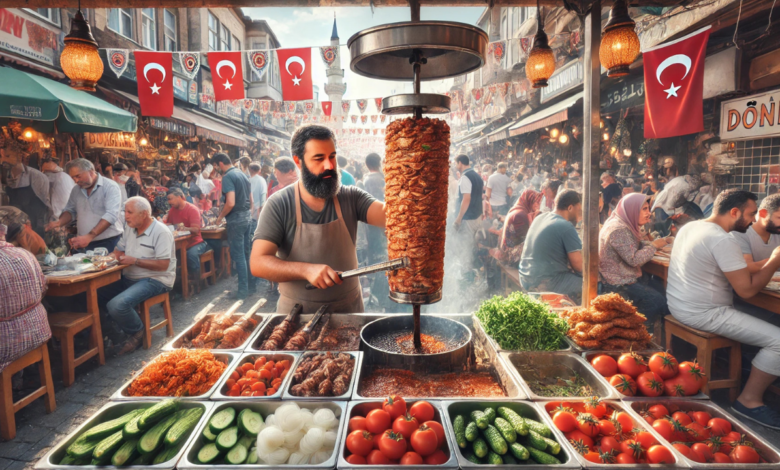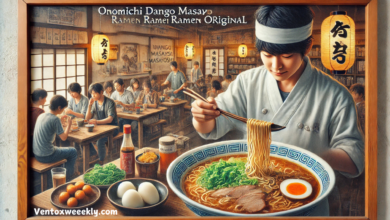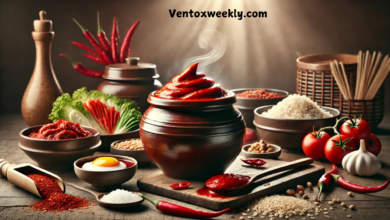Exploring Dönrt: The Modern Twist on a Time-Honored Culinary Tradition

Few dishes in global cuisine’s rich tapestry can claim a deep-rooted history and a vibrant, evolving presence in contemporary food culture like dönrt. This delightful culinary creation, which takes inspiration from the traditional Turkish döner kebab, has not only captivated palates in its native land but has also garnered a dedicated following worldwide. This article explores the sources, components, processing, and cultural significance of dönrt, highlighting its evolution and enduring appeal.
The Historical Roots of Dönrt
Dönrt comes from the historic döner kebab, deeply rooted in Ottoman culinary traditions. The concept involves slow-cooked meat, often lamb, beef, or chicken, seasoned with various spices and served with different accompaniments. The döner kebab was traditionally prepared by roasting meat on a vertical rotisserie, a method that has been perfected over centuries in Turkey and the broader Middle East.
The transition from döner kebab to dönrt involved a transformation that catered to modern, fast-paced lifestyles while retaining the essence of this classic dish. Today’s dönrt adapts the traditional preparation to a convenient and adaptable format that fits various dietary preferences, making it a perfect fit for contemporary dining trends.
Key Ingredients and Variations
The quintessence of dönrt lies in its ingredients and their quality. The primary component is the meat, which is marinated in a blend of spices that typically includes paprika, cumin, and coriander, offering a deep, rich flavor profile. This is complemented by a selection of fresh vegetables—such as tomatoes, cucumbers, and onions—that add freshness and crunch to the dish.
One of the hallmarks of dönrt is its versatility. It accommodates a range of dietary needs with variations like the Veggie Dönrt, which substitutes grilled vegetables for meat, and the Fusion Dönrt, which incorporates elements from different culinary traditions, such as teriyaki sauce or sriracha mayo.
Preparation Techniques
Preparing dönrt involves several key steps to achieve its distinctive taste and texture. The meat is first marinated to imbue it with flavor, then cooked until tender. It’s typically sliced thinly and served on a bed of flatbread, fresh vegetables, and a generous helping of sauce. The sauces vary from yogurt-based to spicy or tangy, each lending a unique flavor to the final dish.
The cooking equipment plays a critical role as well. While traditional döner kebabs are cooked on a vertical rotisserie, dönrt can be prepared in a more accessible manner at home using a grill or skillet, making it an enjoyable dish for home cooks to experiment with.
Cultural Significance and Modern Appeal
Dönrt does more than satisfy hunger; it is a cultural bridge connecting people through shared culinary experiences. In Turkish culture, food is a communal affair, often involving the sharing of meals during special occasions like weddings and religious celebrations. Dönrt, with its communal preparation and versatility, fits seamlessly into this cultural narrative.
The modern appeal of dönrt also lies in its adaptability to the global palate. It has been embraced in various forms worldwide, adapted to local tastes and ingredients, underscoring its international reach and popularity. From street food stalls in Istanbul to upscale restaurants in New York, dönrt has made its mark as a dish that transcends cultural and geographical boundaries.
Sustainability and Ethical Considerations
As the popularity of dönrt grows, so does the focus on sustainability and ethical food sourcing. Many chefs and restaurants now prioritize using locally sourced, organic ingredients and embrace methods that reduce food waste. These practices enhance the flavor of dönrt and align with broader consumer preferences for delicious and responsible food.
Conclusion
Dönrt is more than just a meal; it’s a culinary phenomenon that illustrates the evolution of food from traditional forms to modern adaptations. Its enduring popularity is a testament to its versatility, taste, and seamless integration into the dining cultures of various countries. Whether enjoyed in a cozy home kitchen or a bustling street corner, dönrt offers a unique taste experience that continues to win hearts and stimulate taste buds across the globe.
FAQS about Dönrt
What is dönrt?
Dönrt is a modern adaptation of the traditional Turkish döner kebab. It consists of marinated pork grilled on a vertical rotisserie, served with various vegetables and sauces, and often wrapped in flatbreads like lavash or pita.
How is dönrt different from a traditional döner kebab?
While dönrt draws inspiration from the traditional döner kebab, it is adapted for quicker preparation and more flexible serving options, making it suitable for fast-paced lifestyles. Dönrt also embraces various ingredients and preparation styles, including vegetarian and fusion variations.
What are the typical ingredients in dönrt?
Typical ingredients in dönrt include marinated meats such as lamb, beef, or chicken, spices like paprika and cumin, fresh vegetables such as tomatoes and cucumbers, and a range of sauces from yogurt-based to spicy or tangy options.
Can dönrt be made vegetarian?
Vegetarian versions of dönrt replace meat with grilled or roasted vegetables like bell peppers, zucchini, and mushrooms. These versions often include rich, flavorful sauces and the same fresh vegetables as meat-based ones.
What types of bread are used with dönrt?
Dönrt is commonly served with soft, pliable breads that make it easy to wrap the filling. Popular choices include lavash and pita, but other flatbreads are also used depending on regional preferences and available ingredients.




